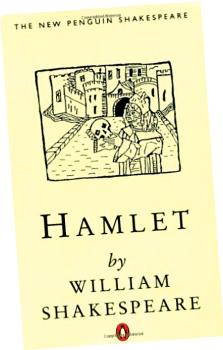
 Shakespeare’s Hamlet is set in Denmark during the Renaissance period in the late Middle Ages. Shakespeare is believed to have varied the plot of the story of Amleth which was recorded in a 12th century history of Denmark by Saxo Grammaticus, and also the Histoires Tragiques by François de Belleforest. Skakespeare also alludes to the Biblical story of Kane and Abel, through the portrayal of Claudius’s jealousy and murder of his brother.
Shakespeare’s Hamlet is set in Denmark during the Renaissance period in the late Middle Ages. Shakespeare is believed to have varied the plot of the story of Amleth which was recorded in a 12th century history of Denmark by Saxo Grammaticus, and also the Histoires Tragiques by François de Belleforest. Skakespeare also alludes to the Biblical story of Kane and Abel, through the portrayal of Claudius’s jealousy and murder of his brother.
Shakespeare explores one of his favourite themes which is the discrepancy between appearance and reality which he also explores in Othello.
Shakespeare establishes an atmosphere of foreboding at the beginning of the play through the entry of the ghost.
After seeing the ghost, Hamlet’s friend and scholar Horatio states, “This bodes a strange eruption to our state.” Hamlet is given the task of taking revenge for his father’s murder by the ghost.
Hamlet is an intellectual and he is not deceived by the Machiavellian villain Claudius’s friendly appearance which is evident when he says, “one can smile and smile and be a villain.”
Hamlet feigns madness and wants to establish the truth of what the ghost told him, and he stages the play named The Mousetrap “to catch the conscience of the king.”
Hamlet’s noble nature is not suited for the task of revenge which is highlighted by Ophelia’s statement, “Oh, what a noble mind is here o'erthrown!—The courtier’s, soldier’s, scholar’s, eye, tongue, sword…” Shakespeare’s Hamlet is universal and relevant even in the 21st century because it provides an insight into Machiavellian scheming, and the nature of kingship and revenge.
